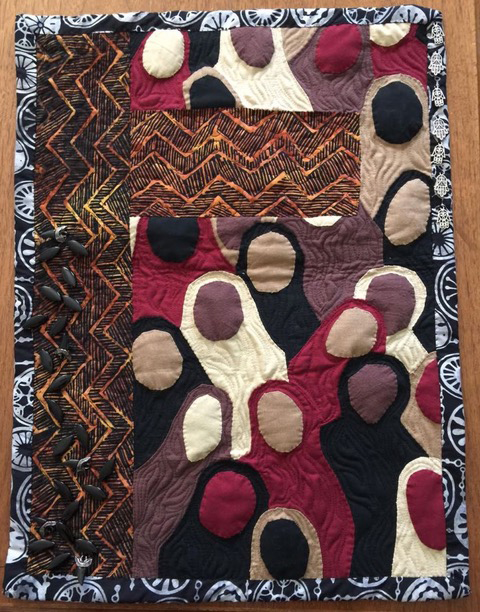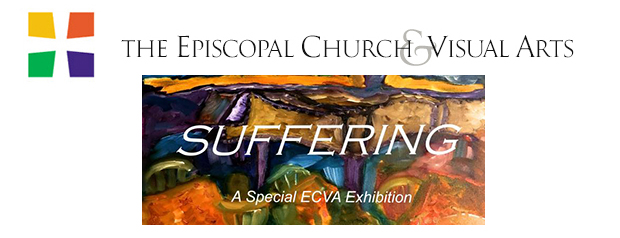 |
| Station 8: Jesus Meets the Women of Jerusalem |
Artist Statement: This quilt was made as part of a series for an installation of the Stations of the Cross at the Church of St. Luke in the Fields. This piece is Station 8: Jesus Meets the Women of Jerusalem. I wanted to give the sense of every woman in this piece - especially the bittersweet choices women face. Jesus walks with us too. "A great number of the people followed him, and among them were women who were beating their breasts and wailing for him. But Jesus turned to them and said, 'Daughters of Jerusalem, do not weep for me but weep for yourselves and for your children.'" Luke 23:27-28 . Bio: I believe I have been a fiber artist since before I can remember. As a young child, I would frequently pluck the fur from my beloved stuffed animals just to relish the sensation of twisting the strands between my fingers. As I got older, my great aunt taught me to quilt - a traditional skill that retained an important place in southern culture even before the Bicentennial inspired the national quilt revival in the 1970's. I began my first quilt in 4th grade, and I did not finish it until college. Along the way, I learned dressmaking, knitting and weaving. I made the majority of my clothes in high school and college - many of them based on patterns and styles from other times in history and other cultures. When I left school for the working world, I gravitated back to quilting as a means of self-expression. Since then, it has remained the dominant medium of my art. |





